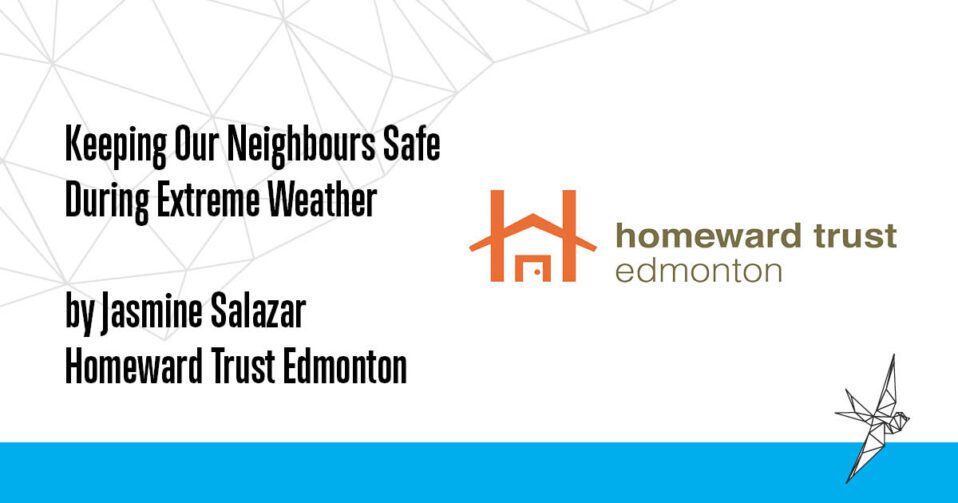The original version of this article was published in our November 2020 newsletter. Information has been updated to reflect the current Sector Emergency Response, as of January 2022.
When temperatures drop, most Edmontonians can keep warm inside their homes. But where do you go when you don’t have a home? For those experiencing homelessness this is a frightening reality that can be dangerous without contingency plans in place.
Every winter, members of Edmonton’s homeless-serving sector—comprised of Homeward Trust, the City of Edmonton, and more than 25 system partners and agencies—coordinate an emergency response to reduce the risk for people experiencing homelessness by getting them into a safe space as quickly and as easily as possible. The current public health crisis has exacerbated the risk for people experiencing homelessness, highlighting a need for an emergency response that goes beyond extreme weather to address unforeseeable challenges.
This coordinated response has resulted in a shift in focus to a broader Sector Emergency Response (SER) to reflect the year-round need to ensure networks are in place and active in order to support individuals when shelters are at capacity and the weather takes a turn for the worst.
“We know people experiencing homelessness are already at increased risk. The compounding effects of extreme cold weather and COVID-19 exposure and restrictions only adds to those dangers,” explains Matthew Ward of Homeward Trust. “Our Sector Emergency Response, which builds off existing control measures to keep the COVID-19 virus from spreading, are important steps to help people experiencing homelessness stay safe.”
A collaborative and proactive problem-solving approach is taken to address arising challenges, which involves partners working together in sharing timely data and resource information between shelter providers, emergency services, transportation services and other service providers across the city to deliver supports to those who need it.
Triggers that activate the Sector Emergency Response in winter are temperatures of -20 or below (including windchill). The response would typically involve lifting bans at shelters under the discretion of providers, opening overflow spaces, increasing current shelter capacity where possible, and providing supplementary transportation services. Edmonton Transit Services has also operated additional buses to serve as a warming space and transport people to shelters.
And in the summer, extreme heat or poor air quality are conditions that could activate a Sector Emergency Response. The response looks at weather warnings from Environment Canada, existing capacity of the city’s emergency shelters, and other emerging concerns expressed by the group.
While the best solution to homelessness is permanent housing, the Sector Emergency Response ensures that people experiencing homelessness have access to life-saving services in times of immediate crisis and are protected from the risks of COVID-19 and cold weather.


Post a comment